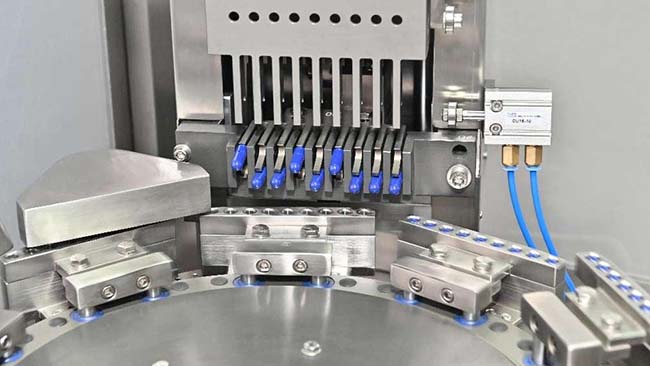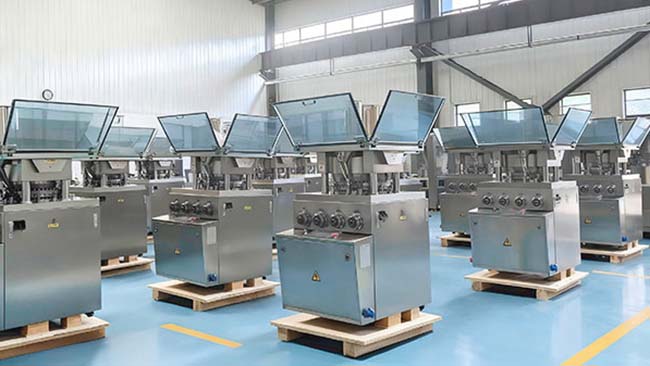Wenn es um flexible, effiziente und verbraucherfreundliche Verpackungslösungen geht, ist die Beutelverpackung ein entscheidender Faktor. Egal, ob Sie in der PharmazeutikaIn der Lebensmittel- oder Kosmetikindustrie sind Sachets eine zuverlässige Option, um die Tragbarkeit zu verbessern, die Produktintegrität zu erhalten und die Produktionskosten zu optimieren. Wenn Sie überlegen, ob Sachet-Verpackungen für Ihr Produkt geeignet sind, ist es wichtig, deren Vorteile, Einschränkungen und Anwendungsmöglichkeiten zu kennen.
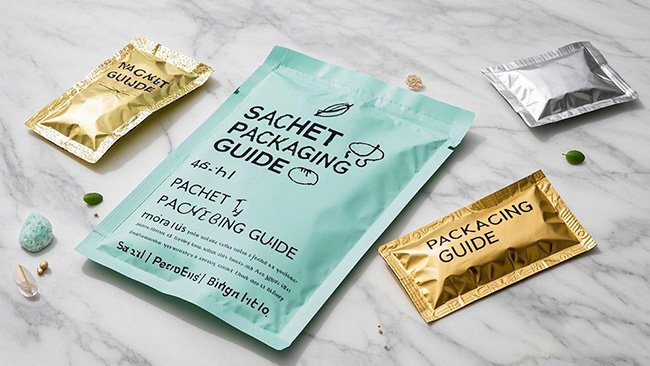
Was ist eine Sachet-Verpackung?
Sachet-Verpackungen sind eine vielseitige und kompakte Lösung für die Aufbewahrung einzelner Produktportionen. Diese kleinen, versiegelten Beutel bestehen aus flexiblen Materialien wie Kunststofffolien, Aluminiumfolie oder Papierlaminaten. Sie sind ihnen wahrscheinlich schon im Alltag begegnet – sei es als Einzeldosis Schmerzmittelpulver, als Zuckerpäckchen im Café oder als Shampooprobe in einem Werbeset.
Diese Verpackungsart ist besonders beliebt, da sie für eine Vielzahl von Branchen geeignet ist. Sie schützt Produkte vor Verunreinigungen, sorgt für Frische und bietet dem Endverbraucher höchsten Komfort. Die verwendeten Materialien werden sorgfältig ausgewählt, um die Qualität und Sicherheit des Inhalts zu gewährleisten. Daher sind Beutel die ideale Wahl für feste und flüssige Produkte.
Hauptvorteile der Sachet-Verpackung
1. Komfort und Tragbarkeit
Beutel sind unglaublich leicht und kompakt und somit ideal für unterwegs. Stellen Sie sich vor, Sie sind auf Reisen und benötigen eine schnelle Lösung – ob Instantkaffee, ein erfrischendes Hautpflegeprodukt oder eine Medikamentendosis – Beutel bieten ultimativen Komfort.
Das Einzeldosisformat macht das Rätselraten überflüssig, sorgt für gleichbleibende Portionen und reduziert Abfall. Für Verbraucher bedeutet dies eine einfache Handhabung; für Unternehmen bedeutet es eine höhere Kundenzufriedenheit.
2. Kosteneffizienz
Aus produktionstechnischer Sicht sind Beutelverpackungen äußerst wirtschaftlich. Im Vergleich zu sperrigeren Verpackungsformaten wie Gläsern oder Flaschen wird nur minimales Material verbraucht. Das senkt die Kosten, ohne die Funktionalität zu beeinträchtigen.
Darüber hinaus lassen sich Sachets dank ihres flachen, kompakten Designs leichter lagern und transportieren. Ob nationaler oder internationaler Versand – Sachets tragen zur Senkung der Logistikkosten bei.
3. Verlängerte Haltbarkeit
Eine der größten Stärken von Beutelverpackungen liegt in ihrer Fähigkeit, die Produktintegrität zu bewahren. Hochbarrierematerialien schützen den Inhalt vor Feuchtigkeit, Sauerstoff und Licht und sorgen so für eine längere Haltbarkeit. Dies ist besonders wichtig für Arzneimittel und Lebensmittel, bei denen Frische und Wirksamkeit unverzichtbar sind.
4. Anpassungsoptionen
Sachets sind der Traum eines jeden Vermarkters. Ihr kompaktes Design lässt sich individuell anpassen, um Marken, Logos und wichtige Informationen ausdrucksstark zu präsentieren. Wählen Sie aus einer Vielzahl von Größen, Formen und Materialien, um Ihren spezifischen Produktanforderungen gerecht zu werden und sicherzustellen, dass Ihre Verpackung im Regal auffällt.
Gängige Anwendungen von Sachet-Verpackungen
Pharmazeutika
In der Pharmaindustrie werden Beutel häufig für Einzeldosismedikamente wie Pulver, Granulate oder Flüssigkeiten verwendet. Sie eignen sich ideal für Produkte wie Erkältungsmittel, Nahrungsergänzungsmittel oder orale Rehydratationslösungen.
Sowohl für Patienten als auch für medizinisches Personal vereinfachen Beutel die Dosierungsgenauigkeit und verbessern die Hygiene. Durch die individuelle Versiegelung jeder Dosis minimiert die Beutelverpackung das Kontaminationsrisiko und erhöht den Komfort.
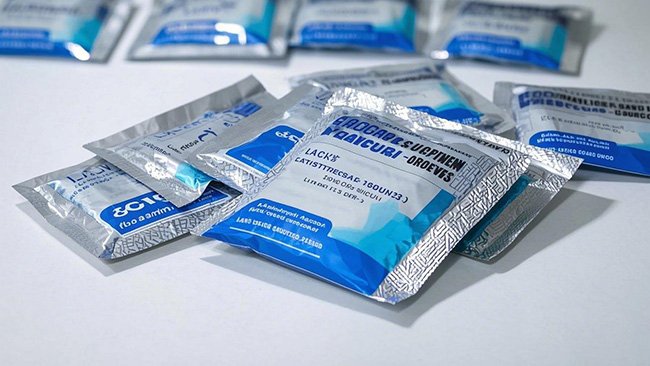
Lebensmittel und Getränke
Von Zuckerpäckchen bis hin zu Instantkaffeebeuteln ist dieses Verpackungsformat ein fester Bestandteil der Lebensmittelindustrie. Es eignet sich perfekt für Einzelportionen von Gewürzen, Gewürzen und Getränkepulver. Auch flüssige Produkte wie Salatdressings und Soßen profitieren von der sauberen, portionierbaren Verpackung in Beuteln.
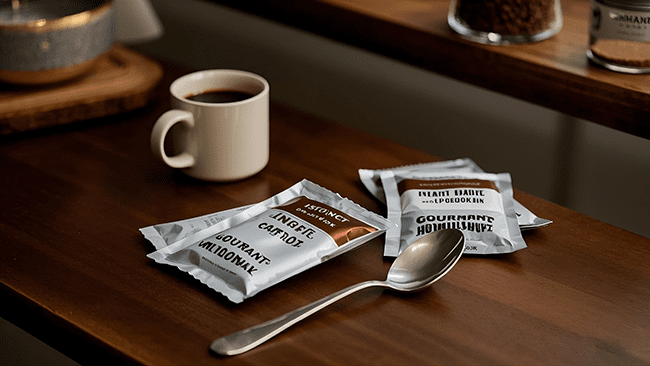
Kosmetik und Körperpflege
Sachets werden in der Kosmetikindustrie häufig für Produkte wie Shampoo, Spülung, Lotion und Gesichtsmasken verwendet. Ihr Einwegformat ist besonders beliebt für Werbeproben und ermöglicht es Marken, neue Produkte kostengünstig an Verbraucher zu vermarkten.
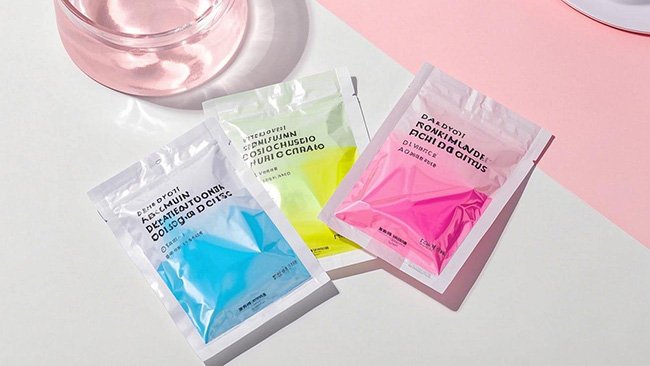
So funktioniert die Sachet-Verpackung
Der Beutelverpackungsprozess ist effizient und hochautomatisiert. Maschinen schneiden, formen, füllen und versiegeln die Beutel in einem nahtlosen Arbeitsgang. Hier ist eine Übersicht über den Prozess:
Schritt | Beschreibung |
Materialauswahl | Wählen Sie flexible Folien oder Laminate, die den Anforderungen des Produkts (z. B. Barriereeigenschaften) entsprechen. |
Bildung | Die Maschine formt das Material zu einem Beutel oder Säckchen. |
Füllung | Das Produkt wird genau abgemessen und in den Beutel gefüllt. |
Versiegelung | Der Beutel ist heißversiegelt, um einen luftdichten Schutz zu gewährleisten. |
Schneiden und Drucken | Einzelne Beutel werden zugeschnitten und optional mit Marken- oder Produktdetails bedruckt. |
Es gibt zwei Haupttypen von Beutelverpackungsmaschinen:
-Horizontale Form-Füll-Verschließmaschinen (HFFS):Am besten für die Großserienproduktion geeignet.
-Vertikale Form-Füll-Versiegelungsmaschinen (VFFS):Kompakt und für mittelgroße Betriebe geeignet.
Einschränkungen der Sachet-Verpackung
Obwohl Sachets zahlreiche Vorteile bieten, gibt es auch Nachteile.
1. Umweltbedenken
Einer der Hauptkritikpunkte an Beutelverpackungen ist ihre Umweltbelastung. Einwegkunststoffe tragen zum Abfall bei und geben Anlass zu Bedenken hinsichtlich der Nachhaltigkeit. Viele Unternehmen suchen nun nach recycelbaren und biologisch abbaubaren Alternativen, um dieses Problem zu lösen.
2. Begrenztes Volumen
Beutel eignen sich am besten für den Einmalgebrauch. Wenn Ihr Produkt größere Mengen benötigt, sind Beutel möglicherweise nicht die praktischste Option.
3. Komplexe Designanforderungen
Da Beutel oft empfindliche Produkte enthalten, ist die Auswahl der Materialien und Maschinen präzise. Dies kann die Ersteinrichtung im Vergleich zu herkömmlichen Verpackungen komplexer machen.
So wählen Sie die richtige Sachet-Verpackungslösung
Bei der Auswahl der perfekten Beutelverpackungslösung sind mehrere Überlegungen erforderlich:
1. Definieren Sie Ihre Produktanforderungen
Bewerten Sie die Beschaffenheit Ihres Produkts – ob es sich um eine Flüssigkeit, ein Pulver oder ein Granulat handelt. Berücksichtigen Sie die Haltbarkeit, die Empfindlichkeit gegenüber Umwelteinflüssen und den Verwendungszweck.
2. Materialoptionen bewerten
Wählen Sie Materialien, die ausreichenden Schutz bieten, wie etwa Folienlaminate für feuchtigkeitsempfindliche Artikel oder UV-blockierende Folien für lichtempfindliche Produkte.
3. Wählen Sie die richtige Ausrüstung
Wenn Sie Großproduzent sind, könnte eine HFFS-Maschine Ihren Anforderungen entsprechen. Für kleinere Betriebe könnte eine VFFS-Maschine eine kostengünstigere Option sein.
4. Nachhaltigkeit berücksichtigen
Suchen Sie nach Materialien und Prozessen, die den Nachhaltigkeitszielen Ihres Unternehmens entsprechen. Entscheiden Sie sich für recycelbare Folien oder biologisch abbaubare Optionen, um umweltbewusste Verbraucher anzusprechen.
Zukünftige Trends bei Sachet-Verpackungen
1. Nachhaltige Materialien
Der Trend zu umweltfreundlichen Alternativen verändert die Branche. Unternehmen experimentieren mit kompostierbaren Folien und recycelbaren Laminaten, um die Umweltbelastung zu reduzieren.
2. Intelligente Verpackung
Innovationen wie QR-Codes und temperaturempfindliche Tinten werden in Beutelverpackungen integriert. Diese Funktionen verbessern die Rückverfolgbarkeit und die Kundenbindung.
3. Personalisierung
Da Verbraucher zunehmend einzigartige Erlebnisse wünschen, werden individuelle Beuteldesigns zu einem wichtigen Differenzierungsmerkmal. Von auffälligem Branding bis hin zu interaktiven Verpackungen – Personalisierung ist unausweichlich.
Abschluss
Beutelverpackungen sind eine vielseitige, kostengünstige und verbraucherfreundliche Lösung, die zahlreiche Branchen revolutioniert hat. Ob Sie die Haltbarkeit Ihres Produkts verlängern, die Tragbarkeit verbessern oder Abfall reduzieren möchten – Beutel bieten eine überzeugende Option. Da die Branche kontinuierlich innovativ ist, können Sie noch nachhaltigere und individuellere Lösungen erwarten, um den steigenden Verbraucheranforderungen gerecht zu werden.
